Olivier Rouvillois is Race for Water’s Quartermaster. He’s responsible for keeping the crew happy and fed, and for keeping things running smoothly on board. As Race for Water heads toward the Dominican Republic, Olivier took advantage of a rare free moment to tell us about his daily routine of running errands during the Havana stopover.
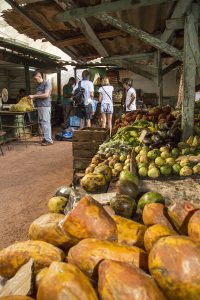
¡Hola!
We left Havana a few days ago and we’re on our way to Santo Domingo—a short hop (comparatively!) that will take about 12 days. We’re sailing more slowly than usual because we’re pushing into a headwind and against the current. So we’re sticking as close as possible to the Cuban coast to find the most favorable currents. We left the Gulf Stream where it flows past Havana, and then headed toward Florida, sailing between Cuba and the Bahamas and then toward the Dominican Republic. Because we’re moving slowly, I have some free time to tell a few stories about our Cuba stopover and my duties as Quartermaster. Depending on where we stop and the kind of infrastructure we find there, my job can be either pretty easy or very complicated!
Havana was our second stopover, after Bermuda. The main themes were Cuba’s Latin rhythms, the schedule on board Race for Water, and some Cuban bureaucracy, which proved to be pretty complicated and time-consuming. Race for Water stayed in an international zone during our entire stay, which meant that everyone had to go through immigration and customs every time we left or boarded the ship. Even the Cubans had to leave their passports with the customs officer! Not to mention the endless lists that we had to provide to the port officials so that we could bring groceries on board. This required a great deal of patience on the part of the crew, especially when we had to wait while the officials hunted for our list, or when our list ended up on the wrong desk.
But let’s not get ahead of ourselves…first, let me tell you about where we were docked. The entrance to the port of Havana is stunning, framed by a fortress on the left and the old city on the right—leading out into Havana Bay and the environmental disaster that it is. Think: brown water, hydrocarbon slicks and plastic trash everywhere, with the oil refinery smokestack belching 24/7. It’s not really an appealing scene, and nothing like the pictures you see on postcards. We docked on the far side of the cruise terminal; no one could see us, and when another ship arrived, we had to anchor in the middle of the highly-polluted Bay, plus we weren’t allowed to use our launch. Leaving us to yell “Allo la lancha!!!” to call the port launch over, which set us back 50 pesos for every trip. Don’t get me wrong—Havana could be a beautiful port, with its esplanade running along the charming old town. It’s not missing much in terms of my top 10 favorite ports. Not to mention Havana itself: it’s hard to imagine the splendor of the place, frozen in time in the 1950s. The old town is crazy—it’s easy to see what made it so beautiful, with its rich architecture and stunning monuments. Today, the place is in full-scale upgrade mode, and in places you can see that a new generation is taking hold.
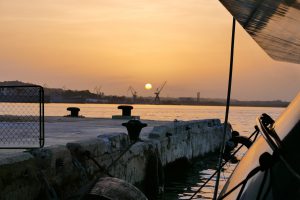
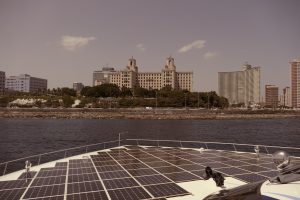
With my eye for architecture, I could easily spend hours looking around, but it’s time to go shopping. Happily, my friend Bérangère was able to join us in Havana, and she’ll be coming along on the trip to the Dominican Republic. So she helped me take inventory, then prepare the infamous shopping list! I had read a few blog posts saying that in Cuba, all of this is no easy task, and they couldn’t have been more right. Every market in the city center has its specialty. There’s not much variety, but everything is very clean and ripe (which then makes it hard for me to store on board!). Everything is priced in Cuban pesos, which we then have to calculate into convertible pesos, and then convert that into pounds or the number of items. Every fruit or vegetable is individually selected in order to get the best ones. We had some great conversations with the shopkeepers and met some really incredible people. It’s the opposite situation from Cuban supermarkets where the shelves are often bare, or stocked with only one thing, depending on what’s been delivered. One day there’s bottled drinking water, the next day nothing. Personal care products like soap and shampoo are hard to find. Even toilet paper is a rare luxury—the first day, I found none. When I finally found some, I bought 50 rolls! In the checkout line, there are only a few Cubans, and they’re buying very little. It was uncomfortable to unload my cart and whip out my pesos, but I don’t really have a choice. I’m feeding 18 people at lunch and 11 at dinner during this week while we’re hosting a group of scientists. So that takes some carts and bags.
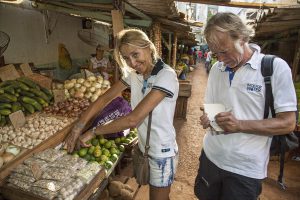
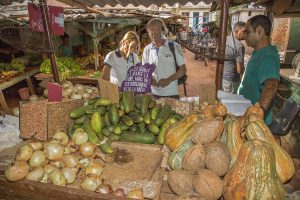
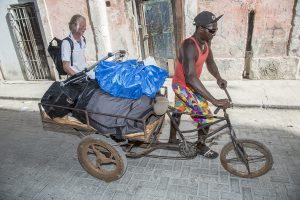
The advantage of going shopping with wheeled bags is that you can walk through the streets, take a taxi, a trike, or a horse cart, and then go through customs. Then we have to scan the 40-50 kilos of food in each bag, plus the 200 liters of drinking water, and then find the infamous list that we gave to the port authorities in advance. Then we have to wait, load, unload, and finally put everything away on board Race for Water. It’s an epic process that starts all over again every week, with one final sprint on the night before we head out to Santo Domingo.
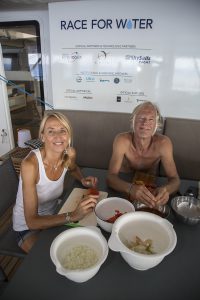
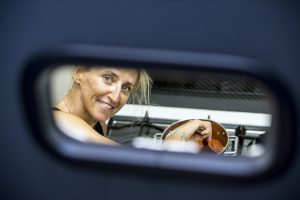
But all of that is nothing compared to the kindness of the Cubans, the great conversations with the shopkeepers and the taxi drivers, the great tips from Carlos, sailing along the Malecon, big lunches at 6 PM and small dinners at 11 PM, getting to see Eric Loizeau again, and our last evening on land for a while.
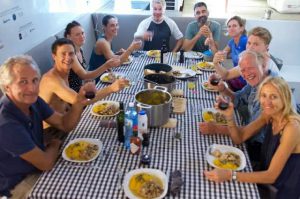
Thank you to our Cuban friends: Betty, Carlos, Irène, Alina, Pina, Lanzaro, and everyone else. This country—so difficult for us to wrap our minds around—is so full of emotions, kindness, and life.
¡Un saludo!
Olivier